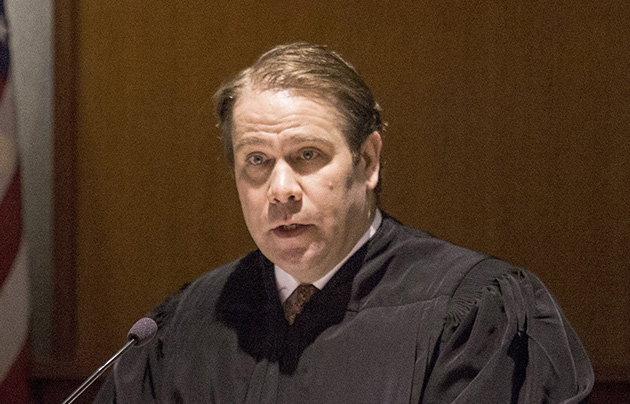U.S. District Court Judge Lance Walker’s ruling Thursday should put to rest any question about who won this year’s U.S. House election in Maine’s 2nd District, the nation’s first congressional election to be decided by ranked-choice voting.
Rep. Bruce Poliquin can still hold out hope for a miracle victory in the ongoing recount, but given Walker’s thorough rejection of his claims, he shouldn’t expect that a court will bail him out by declaring the new voting system unconstitutional.
In addition to giving this race a sense of finality, however, Walker’s opinion also works as a civics primer. It illustrates that the Constitution may be old, but it’s no barrier to change, and it gives the people plenty of room try new ways to make their union more perfect.
The opinion came in response to Poliquin’s claim that Maine’s new ranked-choice voting system should be considered unconstitutional because it violates norms of vote counting that have been around for a long time.
But changing norms is nothing new. Walker recalled how paper ballots were a new idea at the time of our founding, and many jurisdictions did not use a secret ballot. For a long time, only some men and no women could vote, and states could set their own dates for elections.
Over time, our current norms emerged through constitutional amendments and statutes passed on the state and federal level. But there was no point in history where the books were closed and the period for innovation expired.
“The American experiment in republican-representative government neither began nor ended with ratification of the Constitution,” Walker wrote. “The values that informed Article I (of the Constitution) not only inspired the Revolution, but also continued a purposeful evolution in our national experiment in representative government.”
The ranked-choice voting referendum of 2016 was part of that process. A group of citizens determined that our tradition of multi-candidate elections decided by a plurality could hurt moderates and empower those fringe candidates who had a passionate following. They said it also required strategic voting for anyone who wanted to make sure that they didn’t help elect their least favorite candidate by “wasting” a vote on someone who couldn’t win.
They did the hard work of gathering signatures, educating voters and winning on Election Day. When the Legislature tried to undo the new law, supporters gathered signatures again and forced a people’s veto vote, again coming out on the winning side.
This was the innovation: Instead of picking one name on the ballot, voters are also allowed to express their preferences among the others.
If no candidate has a majority, there are a series of instant runoffs with the lowest vote-getter eliminated in each round. If their first-choice candidate is eliminated, a voter’s second choice is counted. The process continues until one candidate breaks 50 percent of the vote.
Supporters say that this system favors candidates with broad appeal and eliminates the need to worry about spoilers.
We’ll find out if they’re right. Experiments don’t always turn out as planned. Fortunately, the court reminds us, we have the tools to change it again if it’s not working.
“Whether (ranked-choice voting) is a better method for holding elections is not a question for which the Constitution holds the answer,” Walker wrote. “By design, the freedoms and burdens of self-governance leave normative questions of policy to be worked out in the public square and answered at the ballot box.”
Send questions/comments to the editors.



Comments are no longer available on this story